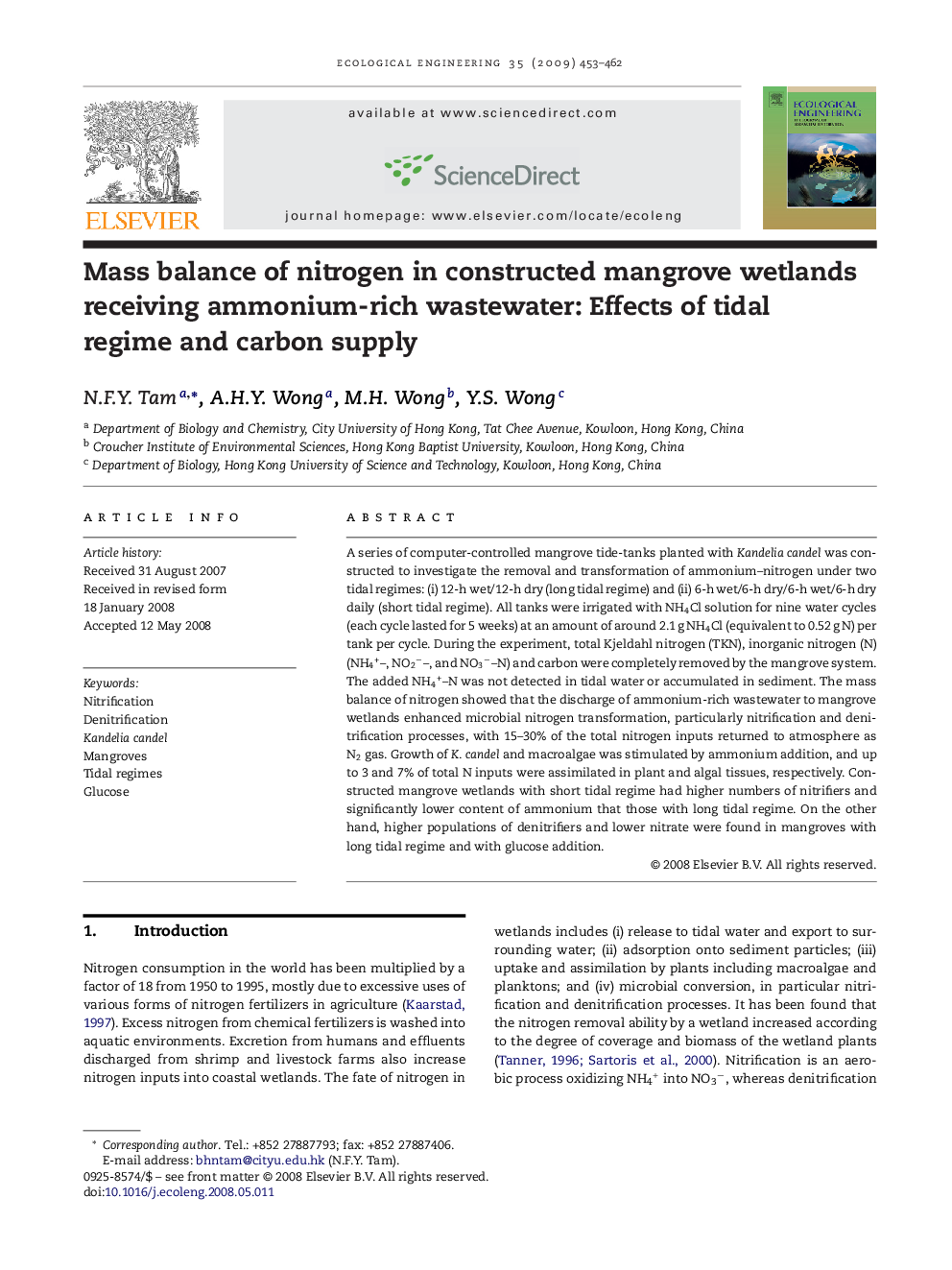| Article ID | Journal | Published Year | Pages | File Type |
|---|---|---|---|---|
| 4390977 | Ecological Engineering | 2009 | 10 Pages |
A series of computer-controlled mangrove tide-tanks planted with Kandelia candel was constructed to investigate the removal and transformation of ammonium–nitrogen under two tidal regimes: (i) 12-h wet/12-h dry (long tidal regime) and (ii) 6-h wet/6-h dry/6-h wet/6-h dry daily (short tidal regime). All tanks were irrigated with NH4Cl solution for nine water cycles (each cycle lasted for 5 weeks) at an amount of around 2.1 g NH4Cl (equivalent to 0.52 g N) per tank per cycle. During the experiment, total Kjeldahl nitrogen (TKN), inorganic nitrogen (N) (NH4+–, NO2−–, and NO3−–N) and carbon were completely removed by the mangrove system. The added NH4+–N was not detected in tidal water or accumulated in sediment. The mass balance of nitrogen showed that the discharge of ammonium-rich wastewater to mangrove wetlands enhanced microbial nitrogen transformation, particularly nitrification and denitrification processes, with 15–30% of the total nitrogen inputs returned to atmosphere as N2 gas. Growth of K. candel and macroalgae was stimulated by ammonium addition, and up to 3 and 7% of total N inputs were assimilated in plant and algal tissues, respectively. Constructed mangrove wetlands with short tidal regime had higher numbers of nitrifiers and significantly lower content of ammonium that those with long tidal regime. On the other hand, higher populations of denitrifiers and lower nitrate were found in mangroves with long tidal regime and with glucose addition.
